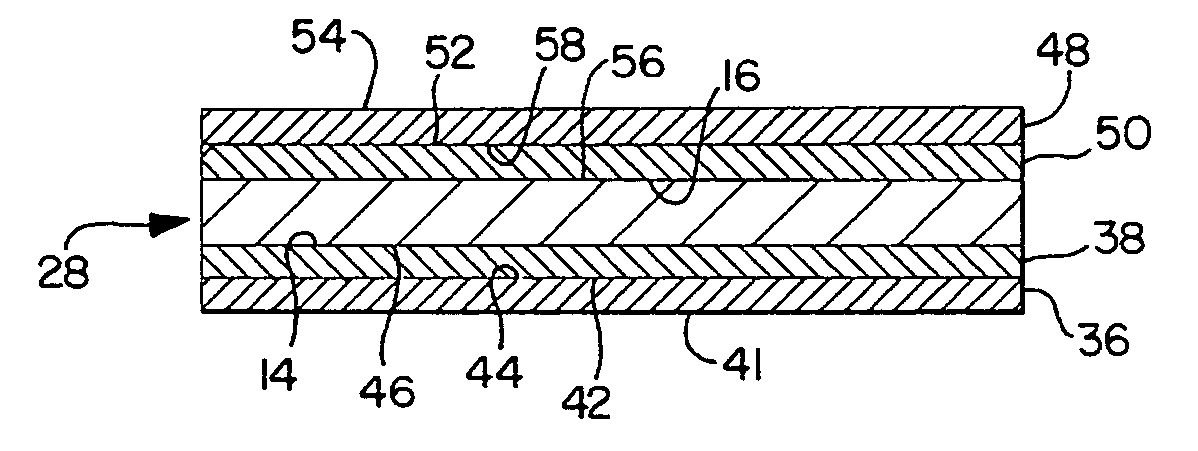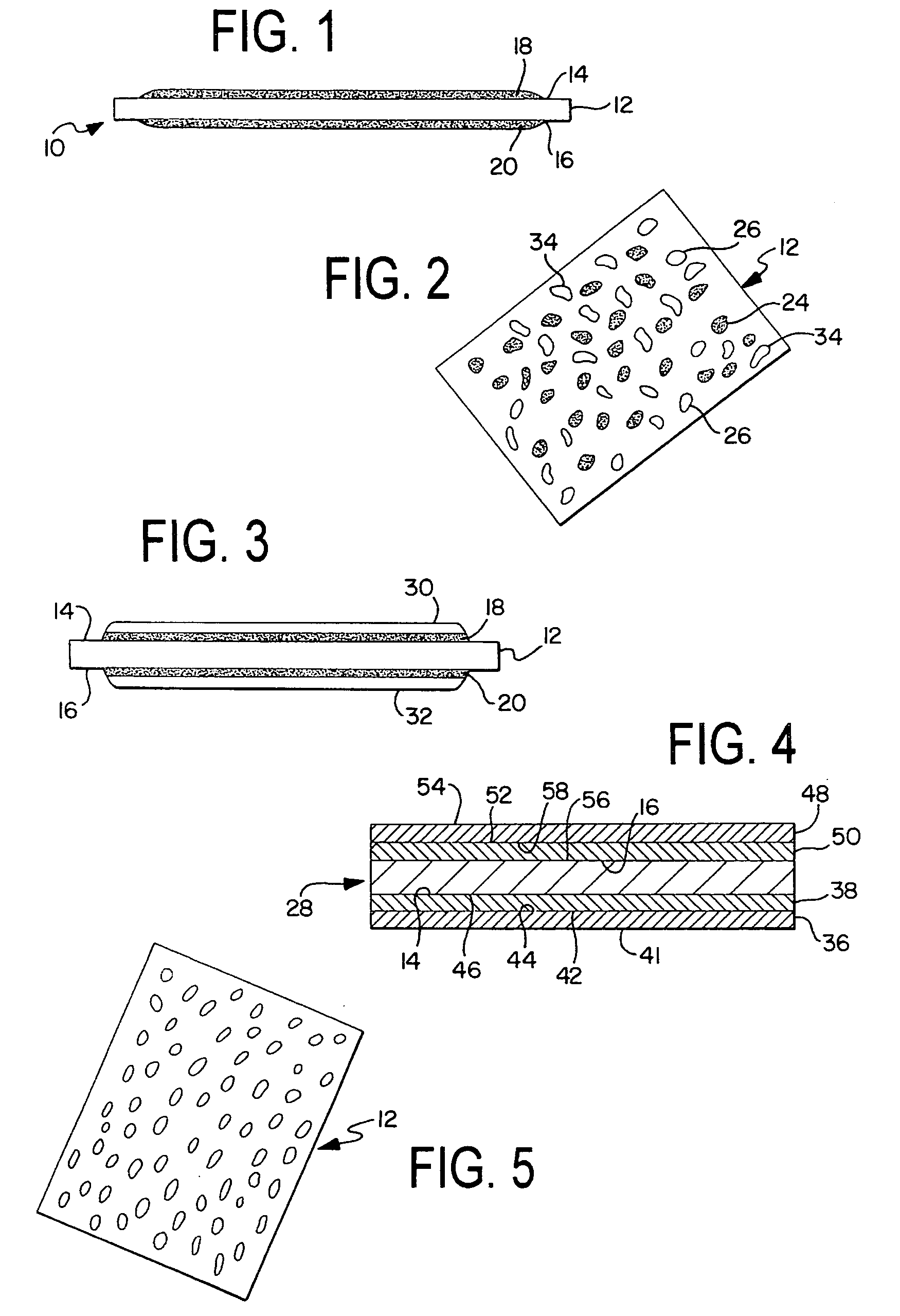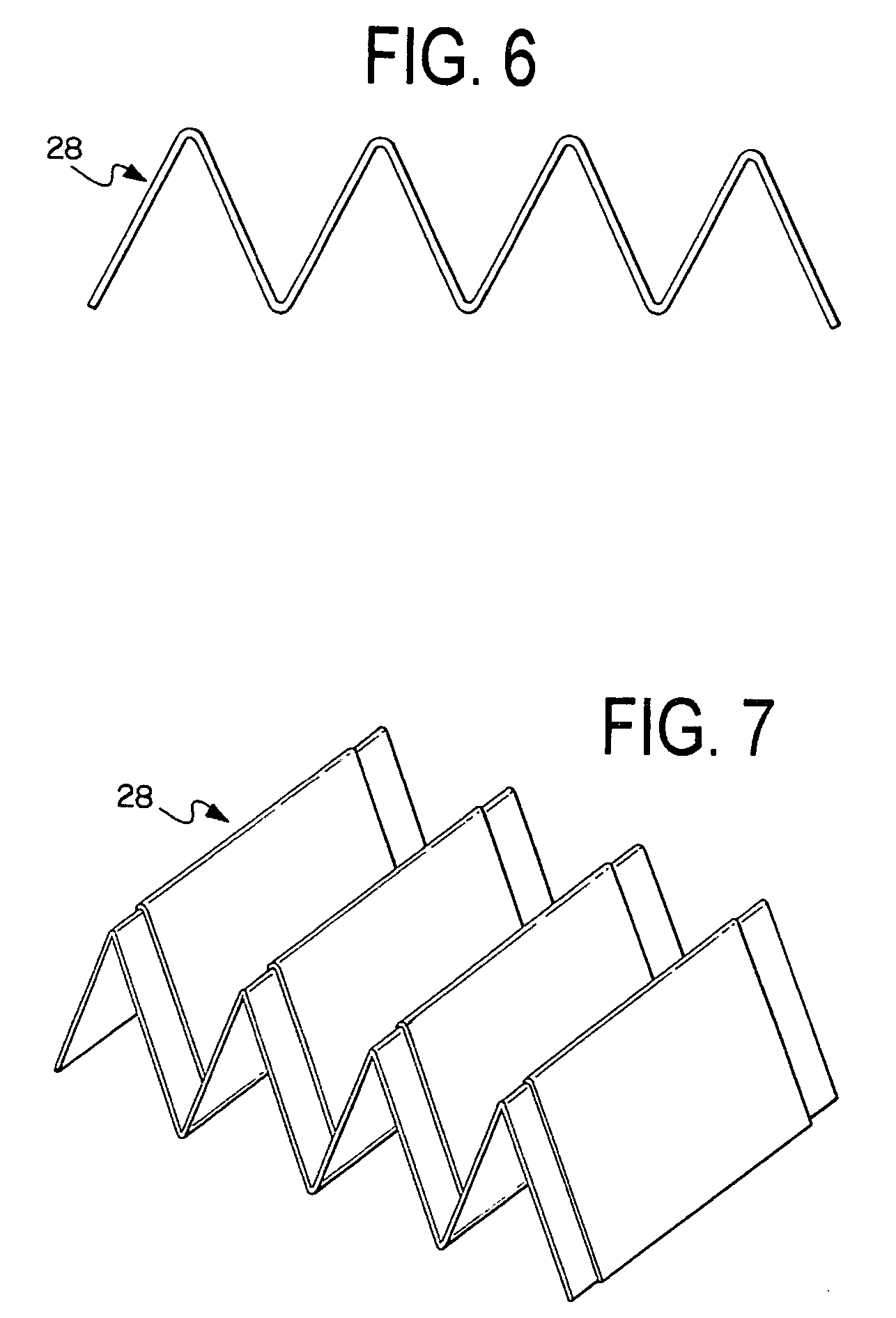Adhesive-treated electrode separator and method of adhering an electrode thereto
a separator and adhesive technology, applied in the direction of cell components, electrochemical generators, cell component details, etc., can solve the problem of tacky polymer components, achieve the effect of maximizing electrode efficiency, reducing the amount of adhesive required, and maximizing surface area
- Summary
- Abstract
- Description
- Claims
- Application Information
AI Technical Summary
Benefits of technology
Problems solved by technology
Method used
Image
Examples
example 1
[0064] Different concentration of PEO (polyethylene oxide) and PVdF (polyvinylidene fluoride) solutions were prepared as given in Table 1. As seen in Table 1, PEO and PVdF concentrations investigated in this work are in range from 1-3 wt %. Solutions that were opaque were stirred on hot plate until turn clear.
TABLE 1PEO (polyethylene oxide) and PVdF(polyvinylidene fluoride) SolutionsPolymer SolutionOpacity1% w / w PEO in γBLClear2% w / w PEO in γBLClear3% w / w PEO in γBLOpaque1% w / w PEO in EC:DMC = 3:7 w / wClear2% w / w PEO in EC:DMC = 3:7 w / wOpaque3% w / w PEO in EC:DMC = 3:7 w / wOpaque1% w / w Kynar 2801 in γBLClear2% w / w Kynar 2801 in γBLClear3% w / w Kynar 2801 in γBLClear1% w / w Kynar 2801 in EC:DMC = 3:7 w / wClear2% w / w Kynar 2801 in EC:DMC = 3:7 w / wClear3% w / w Kynar 2801 in EC:DMC = 3:7 w / wClear
[0065] Polymer solutions were sprayed on electrodes of area 41.76 cm2 by using an airbrush. A strip of Celgard 2500 as a separator was placed in between two electrodes. Lamination was achieved by pas...
example 2
[0074] Instead of coating an adhesive on the electrodes, a solvent is coated on the electrode in order to soften the polymer binder in the electrode and to make it adhesive.
[0075] Electrodes used in the experiments were cathode: PL50(761A), 88-6-6 and anode: QC4100 (Kynar 761A), 91-3-6. The electrodes active area was 41.76 cm2 (‘3 strips’).
[0076] Different amounts of γBL were sprayed on the electrodes using an air-brush. Special attention was given to the uniformity of spraying, which covered the electrode as well as would be achieved by hand air-brushing. Each electrode was weighted before and immediately after applying the solvent. Table 2 gives the amounts of the solvent applied. A strip of Celgard 2500 as a separator was placed in between two electrodes, and lamination was achieved by passing the assembled stack through a laminator at ˜110 C.
[0077] After overnight vacuum drying, the activation of the cells was done in a glove box by soaking the cells in an excess of electroly...
example 3
A battery was formed using the following procedure:
[0083] 1) Prepare a PEMA polymer blend in THF solvent mixture under heating and stirring. [0084] 2) Coat Celgard 2500 in PEMA blend solution for 1˜3 minutes and then dry in air. [0085] 3) Laminate cathode, coated separator, and anode under lower power setting. [0086] 4) Dry in 60° C. oven under vacuum for overnight or more to completely remove THF. [0087] 5) Soak lamination stack in electrolyte SR40 for at least 1 hrs. [0088] 6) Vacuum sealing into prismatic cells.
[0089] It was found:
[0090] (a) PEMA dissolves in hot THF, not in NMP, acetone and carbonate solvent such as EC, DEC and DMC;
[0091] (b) having high boiling points, γBL, EC and PC were used in solvent mixtures in order to leave pores open in coated separator;
[0092] (c) PEMA showed good adhesion between electrodes and separators. No delamination was observed in the cells with PEMA / PEO, PEMA / PMMA blend coated separator after soaking in electrolyte for 2 hrs;
[0093] (d) G...
PUM
| Property | Measurement | Unit |
|---|---|---|
| melting point | aaaaa | aaaaa |
| melting point | aaaaa | aaaaa |
| area | aaaaa | aaaaa |
Abstract
Description
Claims
Application Information
 Login to View More
Login to View More - R&D
- Intellectual Property
- Life Sciences
- Materials
- Tech Scout
- Unparalleled Data Quality
- Higher Quality Content
- 60% Fewer Hallucinations
Browse by: Latest US Patents, China's latest patents, Technical Efficacy Thesaurus, Application Domain, Technology Topic, Popular Technical Reports.
© 2025 PatSnap. All rights reserved.Legal|Privacy policy|Modern Slavery Act Transparency Statement|Sitemap|About US| Contact US: help@patsnap.com



